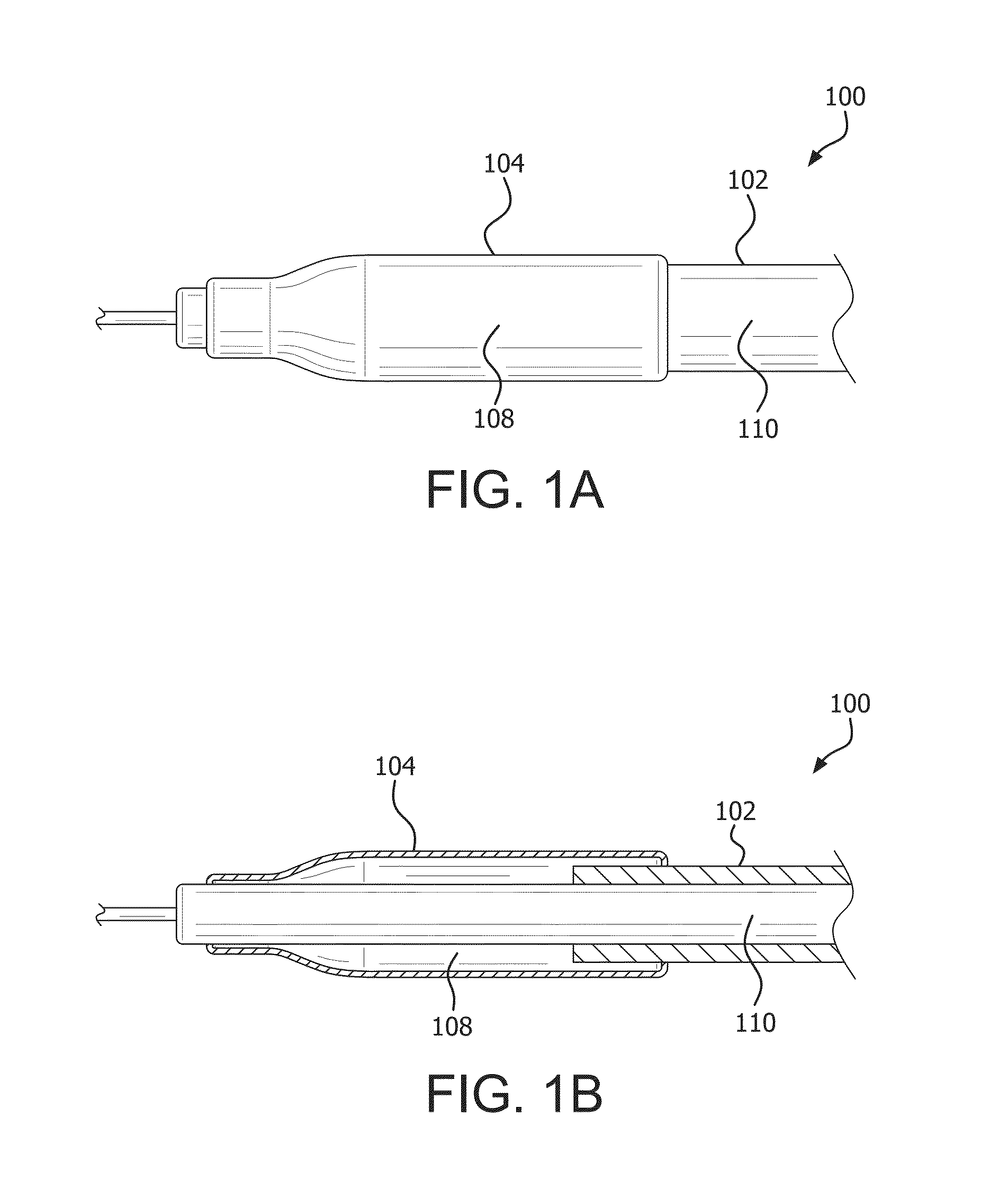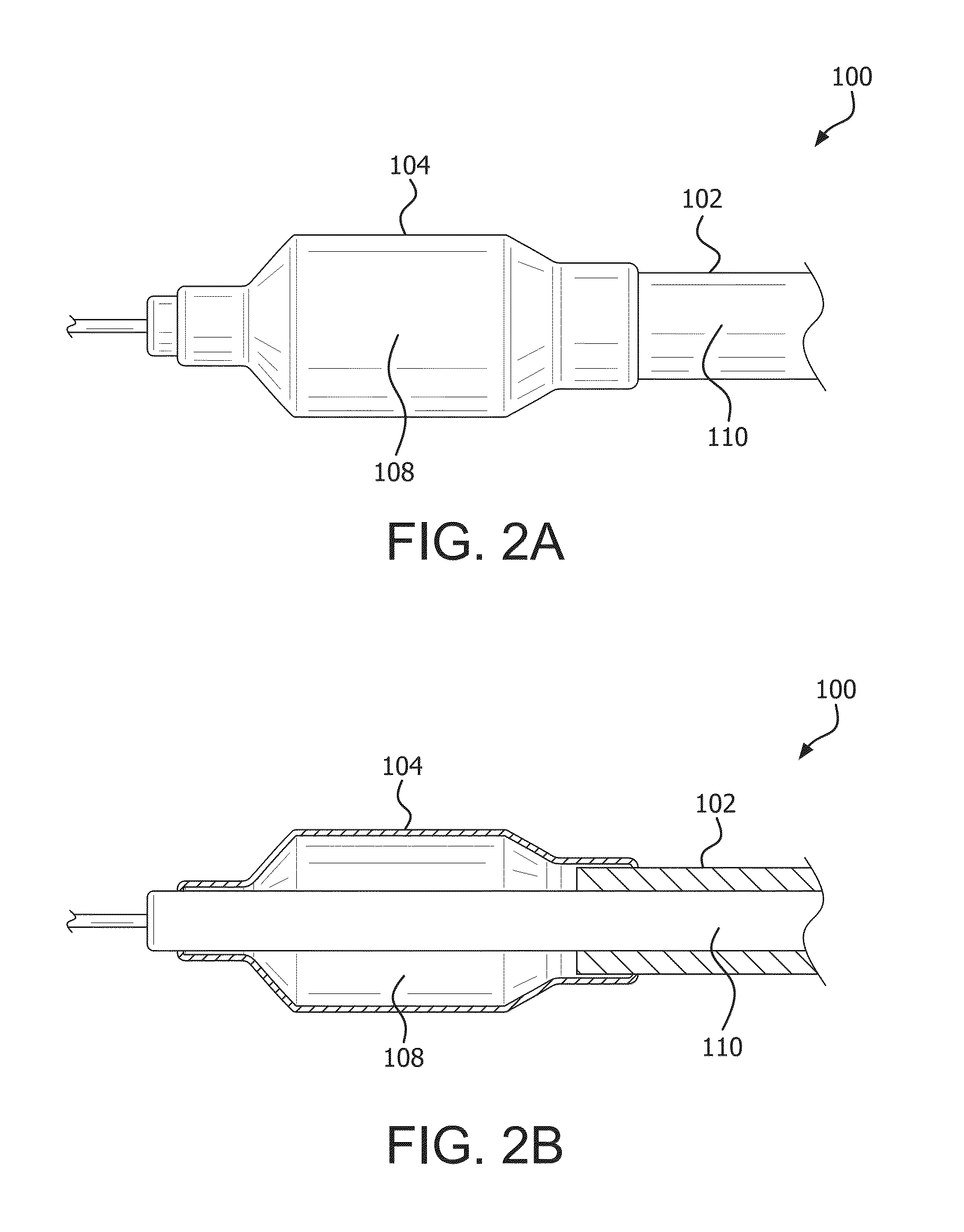Controlled porosity devices for tissue treatments, methods of use, and methods of manufacture
a porosity device and tissue treatment technology, applied in the direction of dilators, machines/engines, catheters, etc., can solve the problems of non-compliant balloons, non-compliant balloons are not suitable, and typical non-compliant balloons will not provide a feature whereby fluid is present, so as to limit the amount of visualization agents released
- Summary
- Abstract
- Description
- Claims
- Application Information
AI Technical Summary
Benefits of technology
Problems solved by technology
Method used
Image
Examples
example 1
Method of Making a Controlled Perfusion Balloons Comprising Three Porous Membranes as Described Herein
[0107]Four perfusion balloons in accordance with the present disclosure were constructed as follows. Expanded polytetrafluoroethylene (ePTFE) membranes made as generally described in co-assigned U.S. Pat. No. 7,306,729 entitled “POROUS PTFE MATERIALS AND ARTICLES PRODUCED THEREFROM” and described in Example 1 were obtained. The membranes were selected to possess a range of bubble point (BP) values (kPa) yet be of similar mass per unit area (grams per square meter (gsm)). The membranes exhibited the following characteristics: Membrane 1: BP=965 kPa, mass=7.4 gsm; Membrane 2: BP=800 kPa, mass=5.1 gsm; Membrane 3: BP=683 kPa, mass=4.8 gsm; Membrane 4: BP=483 kPa, mass=5.4 gsm. Each membrane was slit to a 0.64 cm width as measured across the transverse direction. These membranes served as the first porous membranes / weeping control layers of the balloons (as described herein).
[0108]An eP...
PUM
| Property | Measurement | Unit |
|---|---|---|
| pressure | aaaaa | aaaaa |
| pressure | aaaaa | aaaaa |
| pressure | aaaaa | aaaaa |
Abstract
Description
Claims
Application Information
 Login to View More
Login to View More - R&D
- Intellectual Property
- Life Sciences
- Materials
- Tech Scout
- Unparalleled Data Quality
- Higher Quality Content
- 60% Fewer Hallucinations
Browse by: Latest US Patents, China's latest patents, Technical Efficacy Thesaurus, Application Domain, Technology Topic, Popular Technical Reports.
© 2025 PatSnap. All rights reserved.Legal|Privacy policy|Modern Slavery Act Transparency Statement|Sitemap|About US| Contact US: help@patsnap.com



